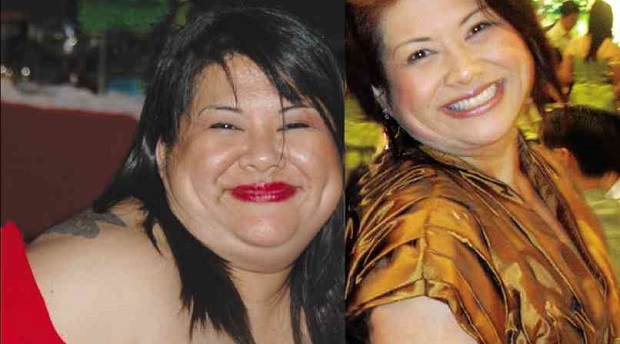Obesity in PH need not be a big, complex problem

AYALA tried—and succeeded—in preventing a modern and expensive disease known as obesity. From 112.5 kg (248 lbs), she now weighs around 60 kg (132 lbs).
Being overweight or obese is not a cosmetic problem. Someone who is 40 percent over his or her normal weight is twice as likely to die prematurely as an average-weight person—an effect seen after 10 to 30 years, according to nonprofit multispecialty academic medical center Cleveland Clinic.
“Indeed, obesity has been linked to several serious medical conditions including diabetes, heart disease, high blood pressure and stroke. It is also associated with higher rates of certain types of cancer: cancer of the colon, rectum and prostate for obese men while cancer of the gallbladder, breast, uterus, cervix and ovaries for obese women,” said Dr. Ferdinand Samonte, a bariatric surgeon at the Center for Obesity Control of the De Los Santos Medical Center.
In fact, Samonte is calling fellow doctors to proactively discuss weight management with patients and even include the routine measurement of children’s height and weight and check adults’ waist circumferences.
Complex issue
“Obesity is a complex issue that requires action at the national, local, family and individual level and everyone—including us doctors—has a role to play in improving the health and wellbeing of the public. Otherwise, this country will soon face a population where there is a huge percentage of obese individuals that require immediate medical attention,” he explained.
An estimated three million Filipinos now suffer from obesity. About 600,000 of these are classified as morbidly obese.
Samonte also cited a new data from the Overseas Development Institute, United Kingdom’s leading independent think tank on international development and humanitarian issues, which found that the number of overweight and obese adults in developing countries has ballooned from some 250 million in 1980 to almost a billion (900 million).
This is a growth of more than 260 percent.
Samonte said: “It’s not surprising that surgery for obesity, known as bariatric surgery, has become increasingly popular here. Most of the patients I saw recounted a litany of diets, drugs, therapies and bizarre and even dangerous remedies to which they’ve resorted. Most are yo-yo dieters, some of whom lose huge amounts of weight only to regain it all. Others have simply given up and gotten progressively fatter.”
Effective way
What he offers them is an effective way to avert a number of devastating health conditions. “Although there are several dozen variations of bariatric surgery, which a number of us could perform, Lap-Band (adjustable gastric banding) procedure is the least invasive and less traumatic than other weight-loss surgeries because it requires no stomach cutting, stapling or gastrointestinal re-routing,” he said.
Samonte explained that the procedure (www.totalobesitysolutions.com) allows patients to feel full longer by pinching off a small portion of the stomach with a removable, adjustable band.
He said: “The surgeon creates a small stomach pouch that will only hold a small amount of food and can be adjusted for each patient’s needs. When the patient eats, food passes slowly from the small stomach pouch to the rest of the stomach, resulting in a more satisfied feeling.” He added that the surgeon can make the band tighter or looser depending on the requirement.
Samonte’s early patients include Lani Ayala who used to weigh 112 kilograms (248 pounds). According to the 5’3’’ real estate and property leasing officer from Davao City, she was way beyond her ideal weight and needed to solve this immediately.
“Seven years after deciding to undergo Lap-Band surgery, Lani now is now able to maintain a 60-kg (132-pound) weight and was able to keep her cholesterol and blood pressure levels to within normal range,” Samonte reported.
Not one-time deal
But the doctor reminded that the procedure should not be regarded as a one-time deal since the patient must also make several follow-up visits—at least four times on the first year and once in the succeeding years. “This is important because the patient needs to get expert opinion and advice as there are only a handful of bariatric surgeons in the Philippines. What we need is for these individuals to maintain a healthy weight after weight loss,” he said.
A World Health Organization report disclosed that Asians are more susceptible to obesity complications such as type 2 diabetes—even among younger patients—because they usually have a higher level of body fat and a lower level of muscularity for every level of body mass index (BMI) as compared to Caucasians.
This means that Asians need not reach a BMI of 35 to 40 (a number calculated from a person’s weight and height) before they start to develop metabolic diseases associated with obesity. At a BMI of 27.5, Filipinos start to have a high risk of developing these associated medical problems, according to the Food and Research Institute survey.
